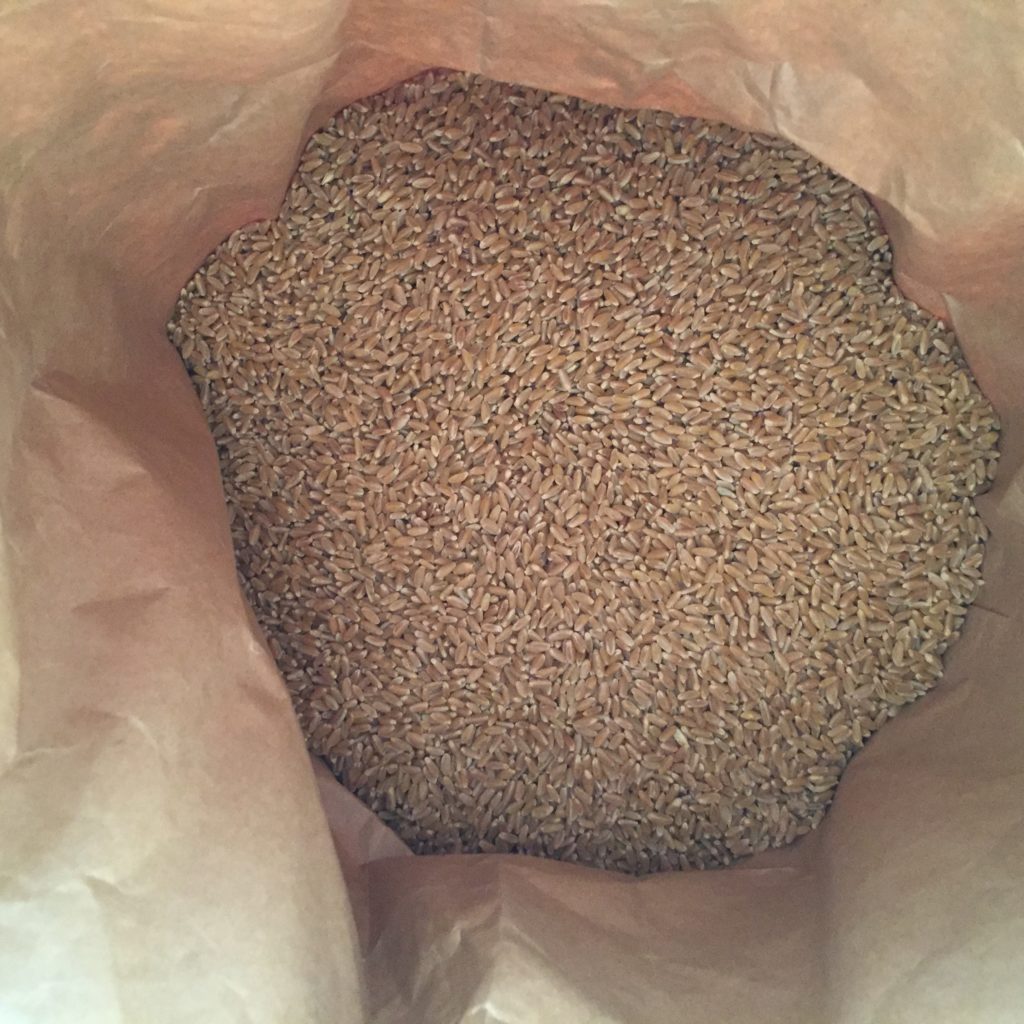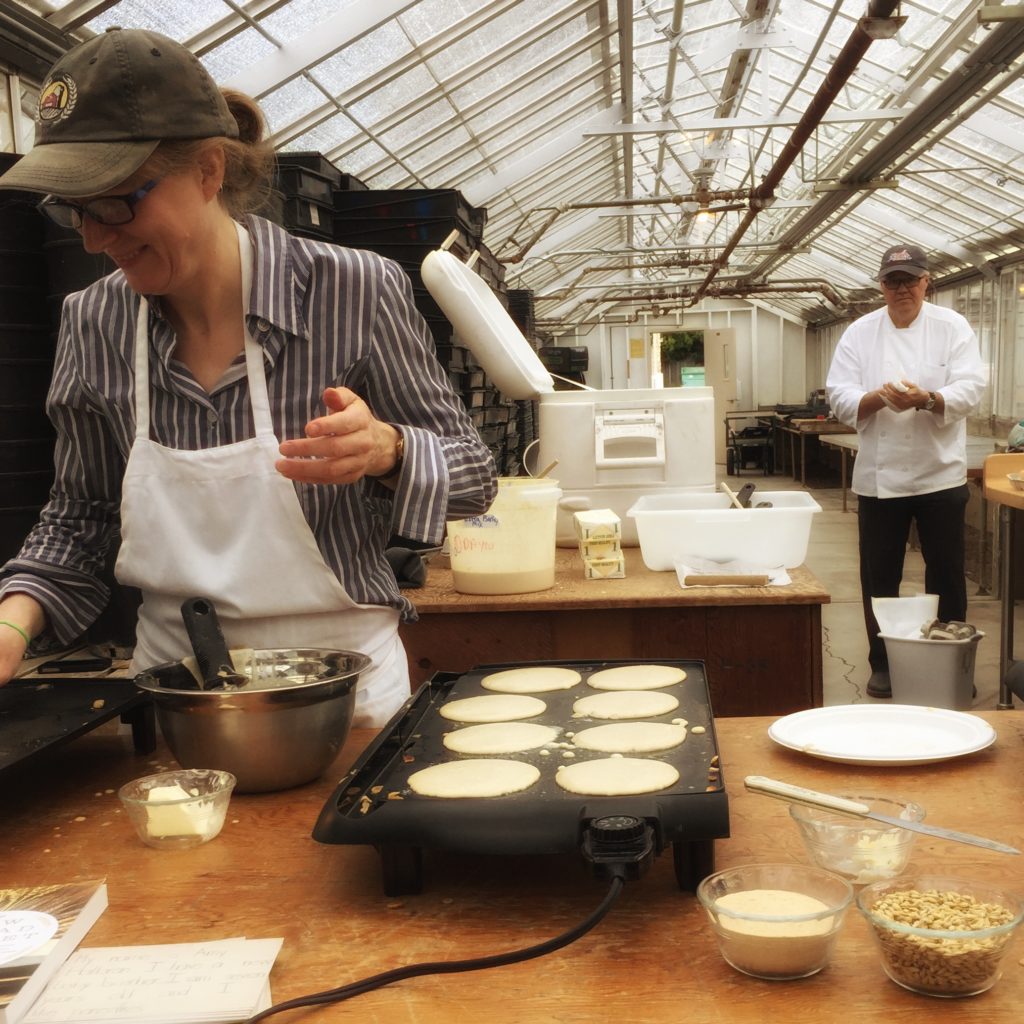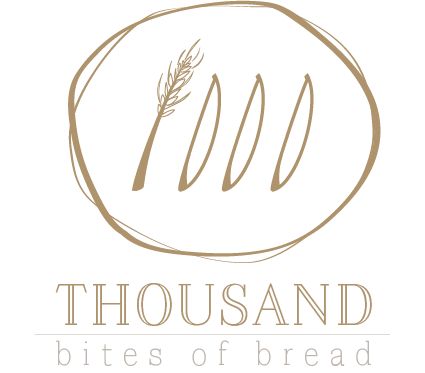I met Amy Halloran’s book about 10 minutes before I met Amy. I arrived at the Grain Gathering last summer, and with a few moments to spare before a bread-baking session, I wandered over to the book tent. What’s new in the world of baking? I wondered as my fingers brushed over the myriad volumes filled with recipes and techniques. Then I stopped. I was peering down at a copy of The New Bread Basket, and this book seemed completely different. A soft-covered, thin-spined book that featured a photo of stalks of grain rather than finished loaves of bread, it captured me from the first. I paged through, spellbound. It had chapter titles like “Know Your Flour” and “Bread Builds Community” and offered itself up as a guide to understanding grain from its inception as seed to its full place in the food web. I had already made the switch from standard commodity flour to a more local product, but there was still so much I didn’t know about how flour makes it into our hands.
Let me backtrack a moment. I’ve spent the better part of fifteen years attempting to make my kitchen more “locovore” by buying milk directly from a beloved farmer and getting most of my vegetables at local farmer’s markets. But sustainable, when it came to my grains, had largely escaped my understanding. Sure, I picked up bags of organic and whole wheat, but for the most part, it all looked inert and didn’t cause much reflection to the fields where they grow. How strange, I thought as I thumbed through Amy’s book. Why had I not thought more about this before now? Bread is my dearest partner in the kitchen. I reflected back to the pretty sack of flour I’d picked up at the farmer’s market the year before. Come to think of it, the scones I’d made with it had been exceptionally flavorful. Could the flavor have been the grain itself, rather than the recipe…?

I bought The New Bread Basket immediately and resolved to put my other literature aside and read it cover-to-cover starting that instant.
Then I was off to my bread-baking session where I found myself standing next to a woman who was having a lively discussion about local flour.
“Have you read The New Bread Basket?” I asked, excitedly.
“Actually,” she said. “I wrote it.” And that’s how I met Amy Halloran.
It turns out that unbeknownst to us, we were sharing an AirBNB, which in turn meant, we were sharing bread and after-hours conversation all weekend and it was one of the most enlightening and depth-filled grain experiences of my life.
Amy isn’t normally a bread girl. She comes at the grain world all-in for pancakes, by way of a cookie that changed her life.

Her book goes on to tell the story about how her husband came back from a business trip with the gift of a cookie. She was skeptical at first, but after the first bite, she was hooked. The treat was made with local flours and somehow she was able to connect that what she tasted was not good butter or chocolate, but the wheat. Her world opened up.
Through her journey, we get this gift of her book. She has an obvious love for history and it shows in the way she carefully dismantles the grain commodity system and puts it back together again in local terms. For anyone who wants to understand our broken grain system, I recommend this book with inordinate fervor.
Last week, I joined Amy Halloran at Barley Day and then she came back to Portland to teach a class about how to make English Muffins using local & sustainable whole grains. She considers herself the princess of pancakes and adores any grain product made on a stove top. I consider her a Griddle Goddess and she taught me English Muffins to prove it.
We also had the pleasure of hanging out at Seastar together and talking about the state of grains in our current culture.
“We have to expand our idea of local,” she said recently. “We need to rethink the whole system so it works for farmers, millers, and bakers alike.”
“People need to be using these flours at home,” she says emphatically. “That’s why we need to make pancakes.”

In her book, there is a single recipe. It’s for The Best Pancakes. I’ve made it this week with Sonora wheat from Grist & Toll, as well as Semolina from Hayden. For my next batch, I’ll mill soft white wheat from Camas Country Mill and include malted barley flour from Carolina Ground at Amy’s insistence. I’d love to share this pancake mix with some of you.
Exciting news: I can! The first two of you who write to me at adrian@communaltable.com will get a bag of Amy-approved pancake mix using freshly milled local grains, along with a signed copy of her book.
The rest of you can find signed copies of Amy’s book at Book Larder. You can also follow Amy on Instagram (@amy.halloran) and meet your new grain guru.

